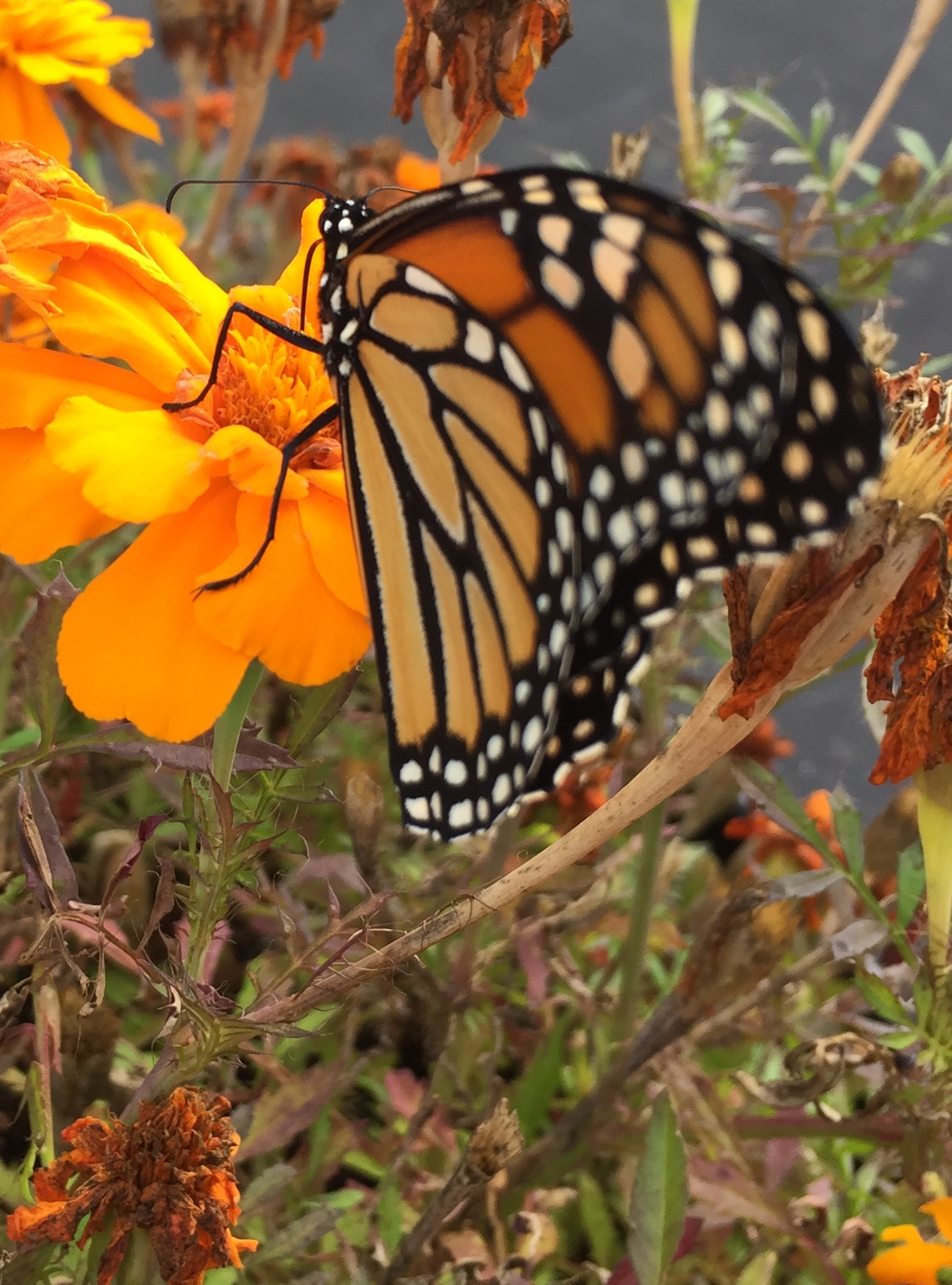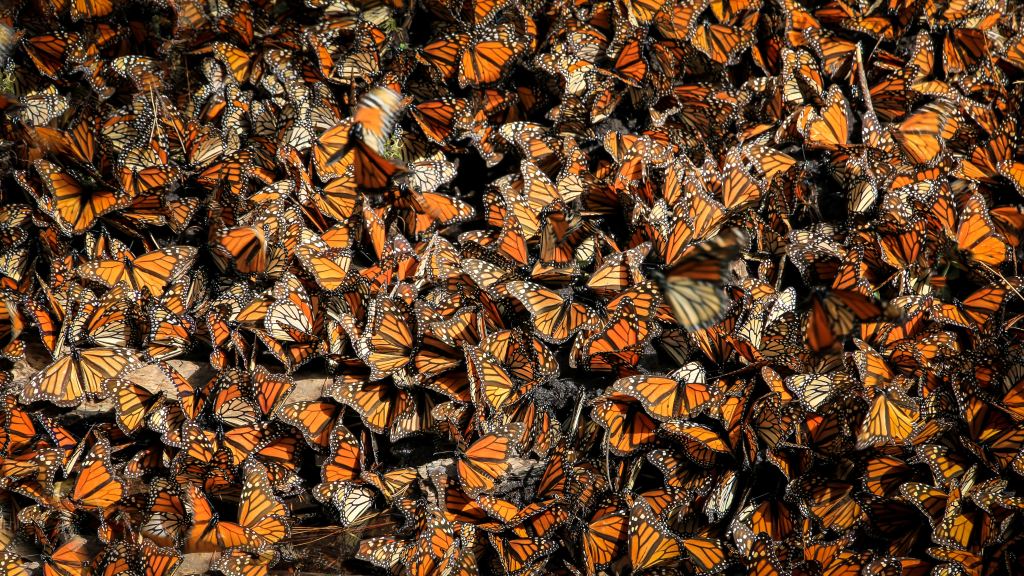Did you know that the Monarch Butterfly is also referred to as the ‘king of the butterflies’? This beautiful butterfly is known for its distinctive orange, black and white markings and is one of the most recognizable butterflies we see. There have been many conversations in the store over recent months exclaiming how many more Monarch Butterflies have been seen this year compared to previous years. Customers comment on seeing them in their backyards and gardens, when on hikes, driving in cars, and almost everywhere they go.


The Monarch will produce four generations in one calendar year. After over-wintering in Mexico, the fourth generation of Monarchs from the previous year awake and search for water. Following that they will mate, and continue mating on their journey north. The females will lay pale yellow eggs on the underside leaves of milkweed plants. She can lay 300-500 eggs in a two to five week period. The eggs hatch into caterpillars after four to five days. The caterpillar will feed exclusively on milkweed plants. Two weeks later the caterpillar will attach itself to a stem or leaf and begin the metamorphosis process. The pupa (chrysalis) is a hard shell that forms around the caterpillar while it completes the remarkable transformation into the adult butterfly. They can stay in the cocoon stage from 5 to 21 days. Adult butterflies are seen in many different habitats as they feed on the nectar of a variety of wild flowers.

The first generation appears from late April to early June. This process is repeated creating two more generations in June-July and July-August. The final generation, sometimes called the super generation follows in August-September. The first three generations of the Monarch Butterfly will only live for two to six weeks. The fourth generation is the one which migrates and overwinters in Mexico and begins the process all over again the following year. This will occur over a period of eight months.

Thousands of Monarchs can be seen on the shores of Lake Ontario and Lake Erie as they prepare for the long migration to the fir forests of Mexico. This is the longest and largest migration in the insect world. More than 300 million will migrate from Canada and the northern US flying 3,000 kilometres to their winter destination. They need to average 50 kilometres a day to achieve this. There are many questions about how these elegant butterflies know the way as they’ve never done this before. Scientists believe they follow direction cues from the sun and the magnetic field of the earth. Monarchs save energy by flying above rising warm air which allows them to soar. They can also speed up their flight by taking advantage of strong winds. If bad weather occurs, they will wait until it has passed. Cold weather makes them sluggish which makes it difficult for them to flap their wings, and hot weather causes them to overheat. Predators avoid the Monarch as they are poisonous. They ingest poisonous juices from the milkweed plant and store the toxins in their wings.
I hope this look into the life of the Monarch Butterfly helps you to appreciate these delicate creatures. Enjoy watching the great migration!
Author – Jane Paradis

